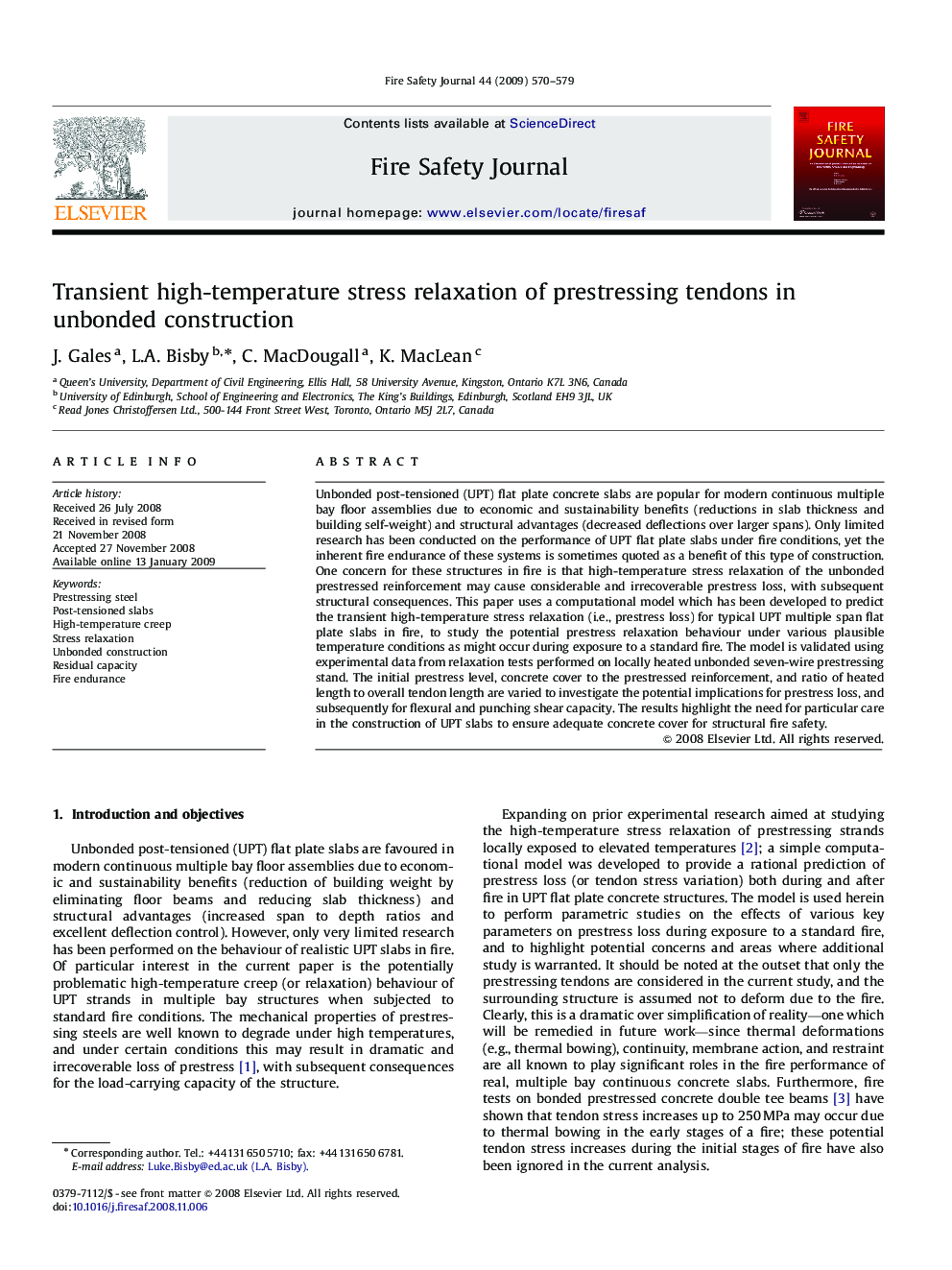| Article ID | Journal | Published Year | Pages | File Type |
|---|---|---|---|---|
| 270438 | Fire Safety Journal | 2009 | 10 Pages |
Unbonded post-tensioned (UPT) flat plate concrete slabs are popular for modern continuous multiple bay floor assemblies due to economic and sustainability benefits (reductions in slab thickness and building self-weight) and structural advantages (decreased deflections over larger spans). Only limited research has been conducted on the performance of UPT flat plate slabs under fire conditions, yet the inherent fire endurance of these systems is sometimes quoted as a benefit of this type of construction. One concern for these structures in fire is that high-temperature stress relaxation of the unbonded prestressed reinforcement may cause considerable and irrecoverable prestress loss, with subsequent structural consequences. This paper uses a computational model which has been developed to predict the transient high-temperature stress relaxation (i.e., prestress loss) for typical UPT multiple span flat plate slabs in fire, to study the potential prestress relaxation behaviour under various plausible temperature conditions as might occur during exposure to a standard fire. The model is validated using experimental data from relaxation tests performed on locally heated unbonded seven-wire prestressing stand. The initial prestress level, concrete cover to the prestressed reinforcement, and ratio of heated length to overall tendon length are varied to investigate the potential implications for prestress loss, and subsequently for flexural and punching shear capacity. The results highlight the need for particular care in the construction of UPT slabs to ensure adequate concrete cover for structural fire safety.
